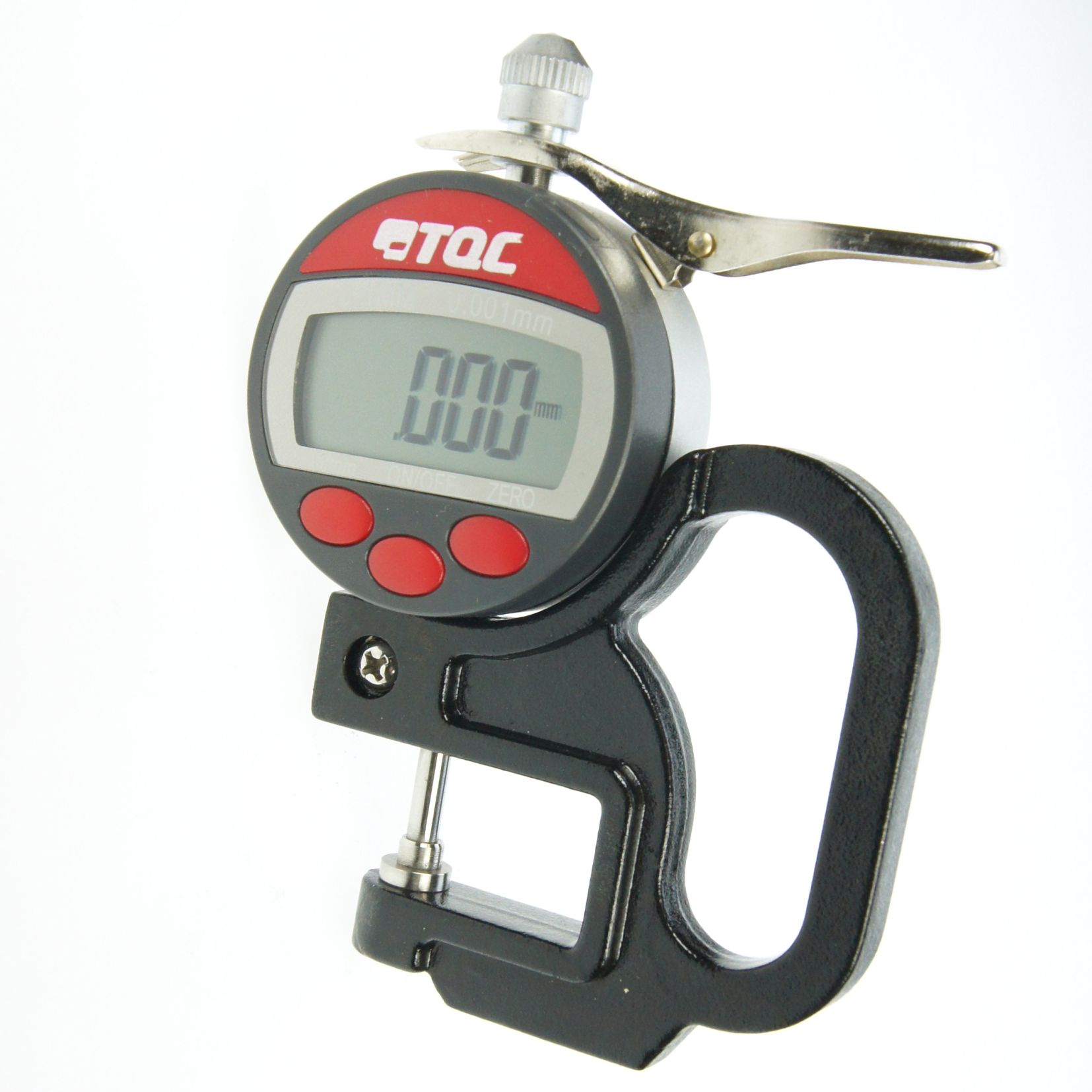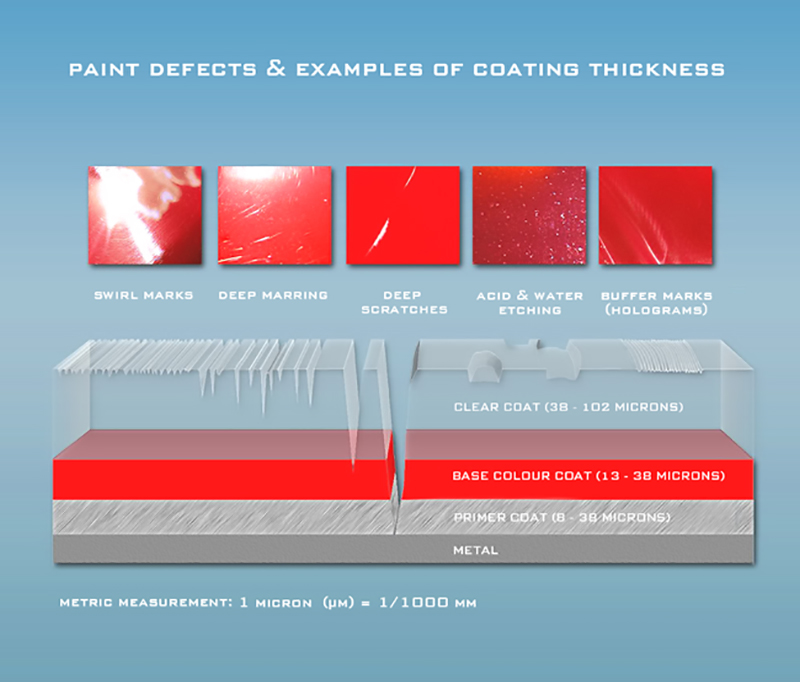

However, a CarFax alone may not be enough. Getting a Carfax on the vehicle in question is a good first step. This would include all maintenance and accident records. One of the first things a person should do when they are considering buying a used car is to get a detailed history of the vehicle.
#Clear coat depth gauge how to

Take the lowest number of thickness and the average, and add the difference between these two to the average. It should always be the aim to never polish away the clear coat. Write these down and calculate the average of the thickness of the clear coat. The general advice is to measure the paint roughly every 10 or 15 inch in a grid pattern on a panel. This will give you a rough idea to work with. With a more expensive model you can even see the thickness of the primer, colored coat and the clear coat. If you have the proper equipment you can measure the paint thickness. This is one of the difficulties that detailers face: how long will it be safe to polish? A general rule of thumb It is even impossible to give 1 number for a panel, or as much as an area of 10 square inch. It would be impossible to give 1 number that would work on all vehicles, surfaces or brands. It could be 50 micrometer at one spot, and 30 micrometer only an inch to the left.


If the colored coat has a thickness of 80 micrometer in one part, it could be 20 micrometer less only 1 inch next to it. Paint is very different between panel, vehicle and brand. It would be best if there was 1 number you needed to remember as a minimum paint thickness, but this is impossible to do. Impossible to name 1 minimum paint thickness If you could have a minimum paint thickness, you could say how much paint you have left to work with. If you polish the vehicle every 6 months, you’ll run out of paint withing 6 years. In total you would have (theoretically) a total of 12 times polishing until both the clear coat and the colored coat is gone. If the colored coat is removed it is considered a burn-through and the primer is exposed. You will have a maximum of 8 times polishing until you will run out of colored coat. As we can see above, this has a thickness of 80 micrometer. If you continue to polish you will start to polish away the colored coat. Once the clear coat is polished off, it is considered a strike-through and the colored coat is exposed. The clear coat has a thickness of 60 micrometer, which means you can polish up to a maximum of 6 times until you run out of clear coat. For the sake of this example, lets say this is 10 micrometer each time you polish. To remove the imperfection that made you decide to polish, you need to remove the amount of the depth of the deepest imperfection. The clear coat has a thickness of 40 micrometer.Įvery time you polish the surface you will remove a very fine layer of the surface. The colored coat has a thickness of 60 micrometer. The primer has a thickness of 20 micrometer. You have been able to measure this with a paint thickness gauge. The thickness of your paint is 120 micrometer. Eventually you’ll run out of paint to work with. So every time you polish the surface, you remove a thing layer. The downside is that you can not re-apply the paint you remove. The amount you remove should be equal to the depth of the deepest surface imperfection you are trying to remove. When polishing, you remove a very fine layer of the surface.


 0 kommentar(er)
0 kommentar(er)
